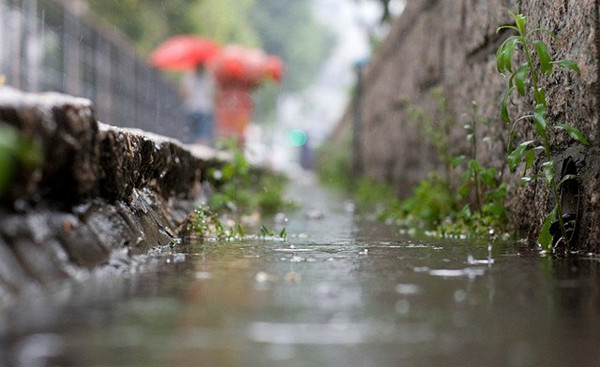With the arrival of cold season , temperatures fall and rain returns, something that not everyone appreciates and what many people complain about, but which is fundamental for life.

Without rain there would be no plants, no crops; the ponds and wells would be dried up; and the world, as we know it, would eventually disappear and with it, us.
Thus, while some complain, others, especially in rural areas, celebrate their arrival one more year.
To me, particularly, I love to see rain through the window with a cup of hot coffee in my hands .
But what do we really know about the rain? Is everything we think about her true?
Keep reading and you will discover 5 surprising things about the rain that you probably do not know.
1. Most raindrops never reach the ground
At least, not until the end of its life cycle. The explanation is as follows: clouds form when a mass of warm air meets a mass of cold air.
In these cases, cold air usually pushes the warm air upwards and, as it rises, it cools down to a point where it condenses and goes from gas to liquid state, that is, it becomes in water and precipitates in the form of a drop.
However, before reaching Earth, it encounters more hot rising air that pushes it up. It is what it calls upstream and it can happen many times during a storm.
As it rises, more water condenses in the raindrop, increasing its weight. Finally, the drop falls to the ground when its density is heavier than the cloud from which it originated, when the upward current is extinguished or, when it cools and turns into hail, falling by its own weight.
2. Not all raindrops are made only of water
There is the so-called acid rain, which is formed when elements such as sulfur or nitrogen are mixed with cloud water, to form sulfuric acid and nitric acid, respectively.
These elements have always existed naturally in the atmosphere in small quantities, due to the action of volcanoes, marshes, hot springs, etc.
However, the action of man and, especially, all the pollution we emit into the atmosphere, have aggravated the problem by multiplying these quantities considerably.
A part of this acid rain falls, generally, in the place in which it is generated, but another part can travel great distances and cross borders when being driven by the wind the clouds that contain it. Depending on the soil in which it falls, this rain can be very damaging to the ground
3. What should we do to get wet as little as possible in the
rain? Walking or running?
Well apparently, “run” (and take refuge under some outgoing, of course).
The answer is based on a complicated mathematical formula that analyzes all the factors involved. In this video you can see a simple explanation of why:
4. You can predict the amount of rain that will fall
depending on the type of clouds
And without needing to see the weather application of our mobile phone! The two most common types of clouds that produce rain are nimbostratus (or nimbostratus) and cumulonimbus (or cumulonimbus).
The first ones are dark gray and they tend to be low, although not always. When their accumulation is great, they barely let the sun pass, and always precipitate, so we can deduce that the rain is imminent; In general, it will be continuous, but not very intense.
The cumolonimbus, on the other hand, are high and dense storm clouds, which usually take the form of mountains, towers or castles, with a dark background. These clouds also produces hail and lightning.
5. Raindrops do not have a teardrop shape
Throughout history, in books, television programs, etc .; The rain in the form of tears has always been illustrated. However, raindrops do not have this shape at all.
In fact, they are spherical when they form and, later, they flatten, adopting a shape more like a hamburger bun, as they collide with other drops of water on their way to the ground.














